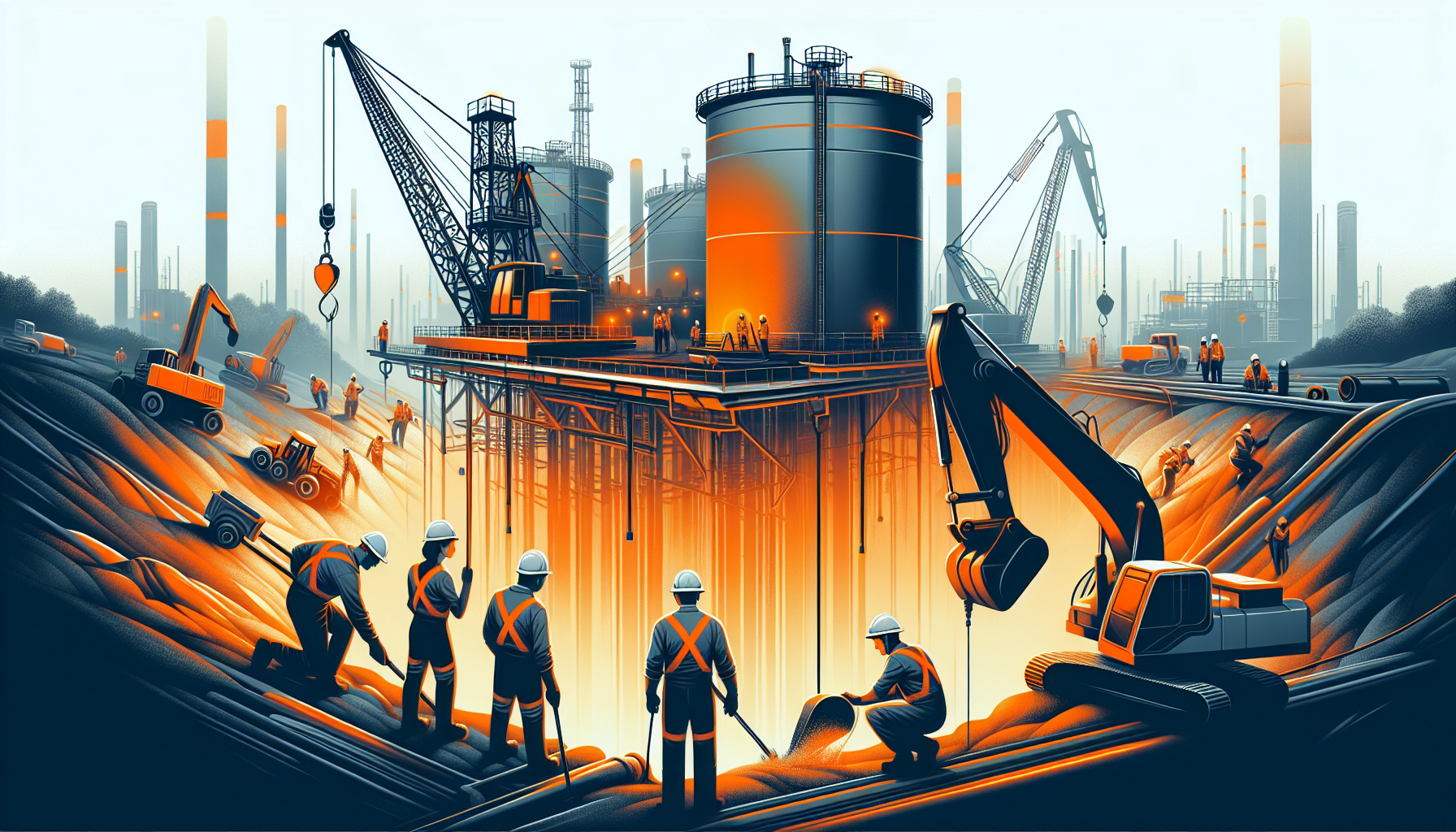Safely and properly removing an underground oil tank is a must-do for eco-conscious homeowners. Imagine the peace of mind that comes with knowing your backyard isn’t hiding a potential environmental hazard. It’s a complex task, but with the right approach, it can be done without harm to Mother Earth or your property.
Ever stumbled upon an old photo of your home and noticed something’s changed? That’s the feeling you get when you realize there’s an old oil tank buried like a forgotten time capsule, except it’s not filled with memories, but with something that could harm your green oasis.
Navigating this underground maze requires more than just a shovel and good intentions. As someone who’s seen the aftermath of a removal gone wrong, I can tell you, the key is in the details and the dedication to doing it right.
Together, we’ll explore the steps to ensure your oil tank removal is as clean and safe as the geothermal energy warming your pool.

Safety Measures for Removing Underground Oil Tanks

Understanding the Risks: Why Safe Removal is Critical
You’ve probably heard horror stories about leaking underground oil tanks, right? Well, they’re not just urban legends. These tanks can be ticking environmental time bombs, with risks like soil contamination and water pollution. It’s not just about getting rid of an eyesore; it’s about protecting your slice of the planet. And let’s be real, you don’t want to be that person who’s responsible for the next eco-disaster.
Permits and Professionals: Don’t Skimp on Expertise
Before you even think about digging, you need the right permits. It’s not just red tape; it’s a safeguard. And hiring qualified professionals isn’t a luxury-it’s a necessity. These folks know the ins and outs of safe removal, and they’re equipped to handle any curveballs. Think of them as your personal environmental SWAT team, ready to neutralize any threat.
Site Prep 101: Excavation and Soil Testing
Now, let’s talk site preparation. It’s like prepping for surgery; you wouldn’t want a doctor to dive in without sterilizing their tools, right? Excavation is the first cut, carefully exposing the tank without disturbing its potentially hazardous contents. Soil testing follows, acting as the diagnostic phase, determining if there’s been any leakage and the extent of it. This step is needed-it sets the stage for a clean removal.
Safety First: The Removal Process
During the actual removal, safety precautions are your best friend. Think of it as a choreographed dance, where every move is calculated. The professionals will monitor for any vapors or leaks, ensuring the air quality is as pristine as a mountain breeze. They’ll handle the tank like a newborn-gently and with utmost care-preventing any spillage or damage.
Post-Removal Protocol: Ensuring a Clean Slate
Once the tank is out, the job isn’t over. The site needs to be as clean as it was before-or cleaner. Any contaminated soil is treated like contraband, removed and disposed of properly. It’s like erasing evidence of a crime, except the crime here is against the environment. And you, eco-conscious homeowner, have just ensured your land is not a crime scene.
Legal and Financial Implications of Oil Tank Removal

Navigating the Legal Maze: Oil Tank Removal Regulations
You’re about to plunge into a journey to remove an underground oil tank from your property. It’s not just about digging it up; it’s a legal tightrope walk. Local and state regulations are strict, and for good reason. Improper removal can lead to soil contamination, which poses a health risk and can attract hefty fines. Before you start, you need to understand the legal requirements. These often include obtaining permits, following specific removal procedures, and ensuring proper documentation. It’s like a recipe; miss a step, and the whole thing could go south.
The Cost of Digging Deep: Financial Aspects of Oil Tank Excavation
Let’s talk numbers. Removing an oil tank isn’t just about the physical act of excavation. It’s a financial commitment. You’re looking at costs for the excavation crew, specialized equipment, and safety measures to prevent contamination. Think of it as an investment in your property’s future and safety. Cutting corners could mean spending more down the line on environmental cleanup or legal fees. It’s like buying a good pair of boots; pay for quality now, or pay for repairs later.
Disposal and Cleanup: The Hidden Fees
Once the tank is out, the job isn’t over. You’ve got to dispose of the tank and clean up any mess left behind. This includes dealing with any contaminated soil, which can be a Pandora’s box of expenses. It’s not just about tossing the tank on a truck; it’s about ensuring the land is as clean as it was before-or better. This step is needed, as overlooking it can lead to long-term environmental damage and even more financial strain. It’s like cleaning up after a party; the real work often starts when the fun ends.
Inspections: Your Safety Net
Think of professional inspections as your safety net. They’re there to catch any potential issues before they become real problems. A thorough inspection of the tank and surrounding soil before removal can save you from unexpected costs and legal headaches. It’s like checking the weather before a hike; it’s better to be prepared than caught in a storm.
Post-Removal Protocol: Ensuring a Clean Slate
After the tank is gone, you can’t just pat yourself on the back and call it a day. There’s a post-removal protocol to follow, ensuring the site is clean and poses no future risks. This might involve soil testing and remediation to meet environmental standards. It’s the final stretch of the marathon; you’ve come this far, don’t stumble at the finish line.


